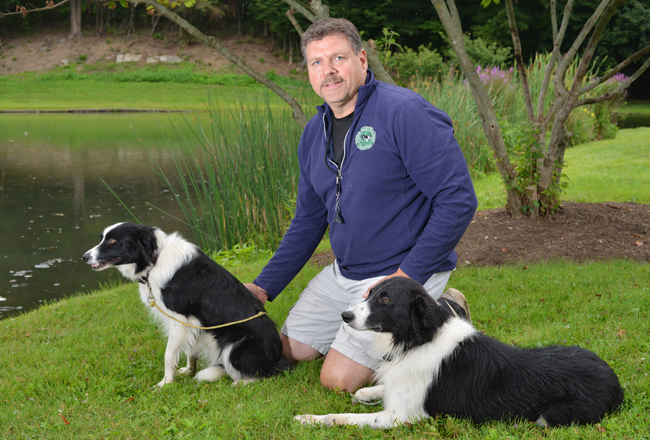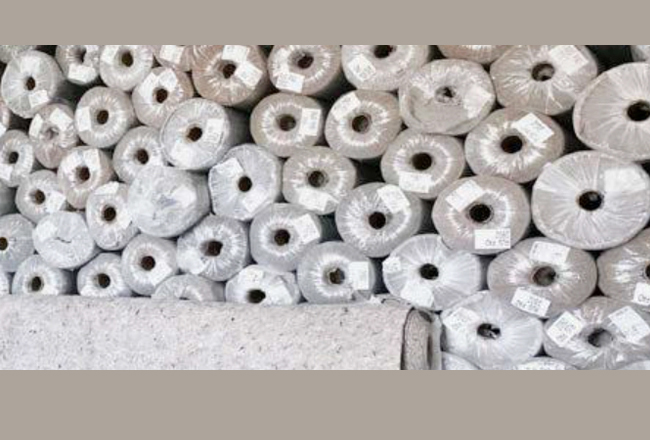
Health and safety problems caused by immigrants that have crossed our northern border have prompted a government study that suggests methods for managing the migrants.
One group follows the seasons and crops. Another has settled in as permanent residents. Their total population in New York could be as much as 800,000.
They are not sending their best. Some, to be sure, are good, but most of them are bringing diseases and destructive ways.
Not even a wall can stanch the flow, so the government has recommended several options: Rounding them up and deporting them. Frightening them into leaving. Discouraging reproduction. Even hunting them down.
Yes, we are talking about the fearsome Canada geese, those waddling, honking pooping avians that have invaded our office parks and farmlands, golf courses and athletic fields, waterways and airports.
“They”™re a big-time problem,” said Pete Rizzo, owner of Hudson Valley Wild Goose Chasers in Nyack. “Recreation areas, corporate parks, golf courses, cemeteries, every school athletic field in the Northeast have these problems. I don”™t care where you are. There is no shortage of Canada geese.”
The U.S. Department of Agriculture, with help from the New York Department of Environmental Conservation and other state and federal agencies, issued an environmental assessment in July that recommends ways to control this non-native population.
The report says Canada geese cause about $510,000 in damage yearly in New York. Rizzo thinks the costs are much higher.
There are distinct populations. Migratory geese drop by from late September to November and then depart in the spring. Resident Canada geese live in New York year-round. Numbering about 230,000, they are descendants of captive birds from the early 20th century from farms, hunt clubs and government release programs.
Resident geese are the big troublemakers. They have an appetite for corn, wheat, rye, spinach and blueberries, so they like to dine on lawns, golf courses and farms.
[vsw id=”YlaAlKQB0yU” source=”youtube” width=”650″ height=”440″ autoplay=”no”]They tend to target newly planted corn fields. They bite off the ends of spinach, leaving the plants unmarketable. They are known to overgraze on grass meant to be used as hay for horses, alpacas and llamas. They trample emerging crops and erode the soil.
And all that stuff they eat? Well, there is no delicate way to put it. The number one complaint about geese is the abundance of feces they deposit.
The average wet weight of a single goose dropping on a summer day, according to a 1999 study of Westchester geese, is 0.02 pounds. That doesn”™t sound like much, but they are prolific, producing a half-pound a day, according to the study, or one to three pounds a day, according to Rizzo. That”™s 183 pounds to half a ton a year of waste per waterfowl.
Their fecal matter contains nasty pathogens ”” coliform bacteria, cryptosporidium and campylobacter ”” that can cause serious gastrointestinal distress. Large colonies of geese dump large quantities of pathogens and nitrogen onto fields, ponds, pools and reservoirs.
Goose diseases and parasites sicken livestock. They can be life-threatening to people with weak immune systems but thus far, the report says, the probability of transmission to humans is believed to be small.
They also pose a threat to human safety in the air. They are birds after all and rather large, at 8 to 15 pounds. Yet airplanes are certified against risks from birds weighing up to 4 pounds.
About 240 goose-aircraft collisions occur annually, the Federal Aviation Administration estimates. Who can forget U.S. Airways Flight 1549, when Chesley Sullenberger ditched an Airbus in the Hudson River minutes after taking off from LaGuardia Airport. The jet had lost power when four geese were sucked into the engines.
There are also aesthetic considerations. The slippery stuff slimes docks and driveways and sidewalks. Businesses often feel compelled to pay good money to clean and disinfect their grounds.
Rizzo said a typical athletic field or 50-acre tract with water can cost $250 to $300 a week to keep the critters away.
So, what to do?
The preferred methods of managing geese, the agriculture agency says, are nonlethal. They can be sterilized to reduce long-term population growth. Fences and netting can block them from using an area. Their habitats can be altered to make them less welcome. Airports, for example, destroy nesting areas and feeding sites.
You can try to scare them with raptor effigies, silhouettes, mirrors or moving disks. You can annoy them with paintball guns, sonic cannons, propane exploders and pyrotechnics. You can repel them with an artificial grape flavoring that they find offensive.
They can be captured and relocated into the wild, where they pose less risk for people, livestock and crops.
Each method has advantages and disadvantages. Scaring techniques, for example, usually work in the short-term, but geese learn to ignore them.
Rizzo uses border collies to “educate” the geese to abandon a location. They see collies as predators and they realize “their ground is no longer safe.”
He said he can clear a field of 200 geese in minutes. And after a few close encounters with the dog, they don”™t bother to come back.
Lethal methods include hunting, breaking their necks, chemically euthanizing them and destroying their eggs and nests.
But before you do anything, consider this. Canada geese are protected by federal and state laws. It is illegal to hunt, kill, sell, buy or possess migratory birds or their parts. You will need a government permit to manage your local gaggle.




















